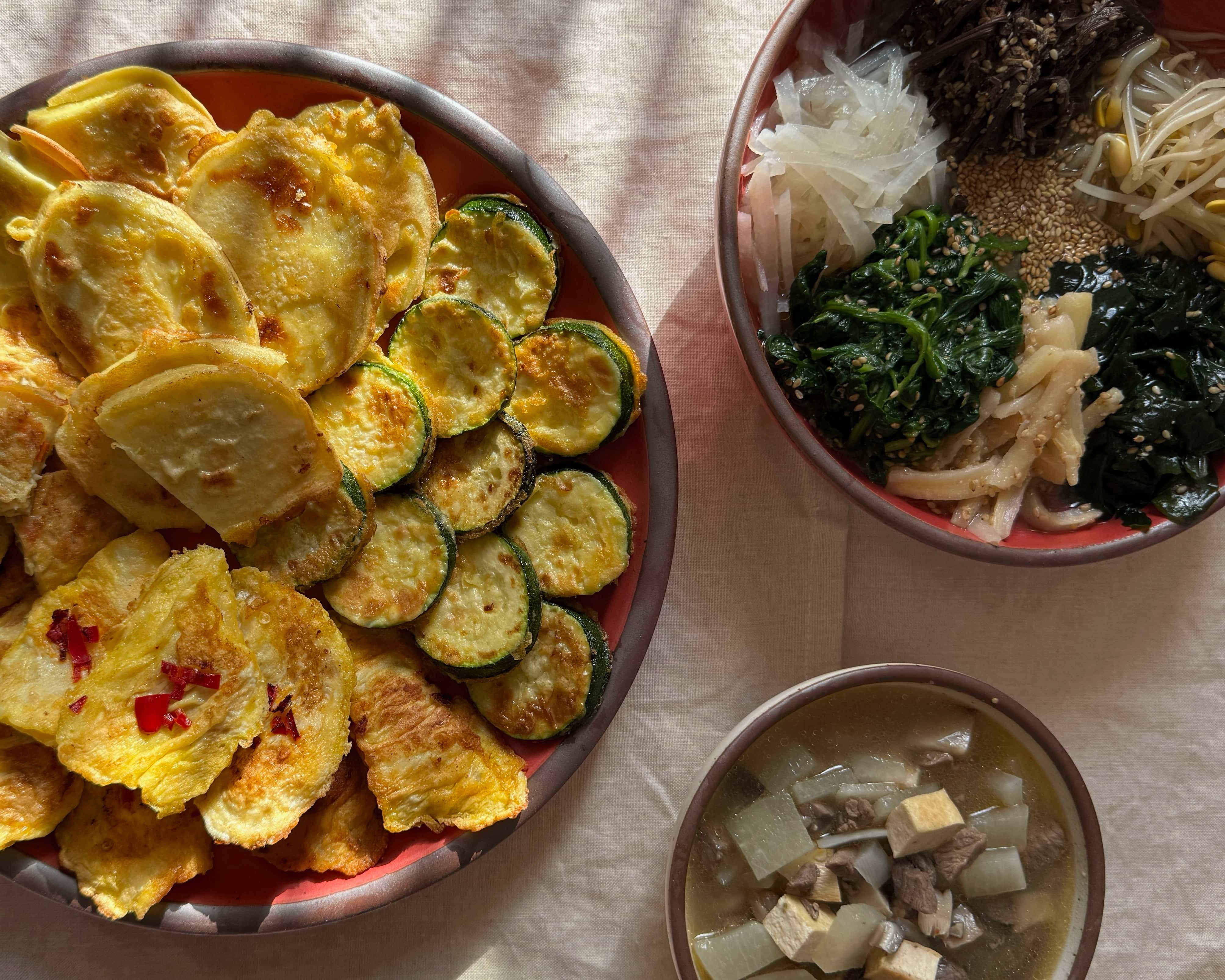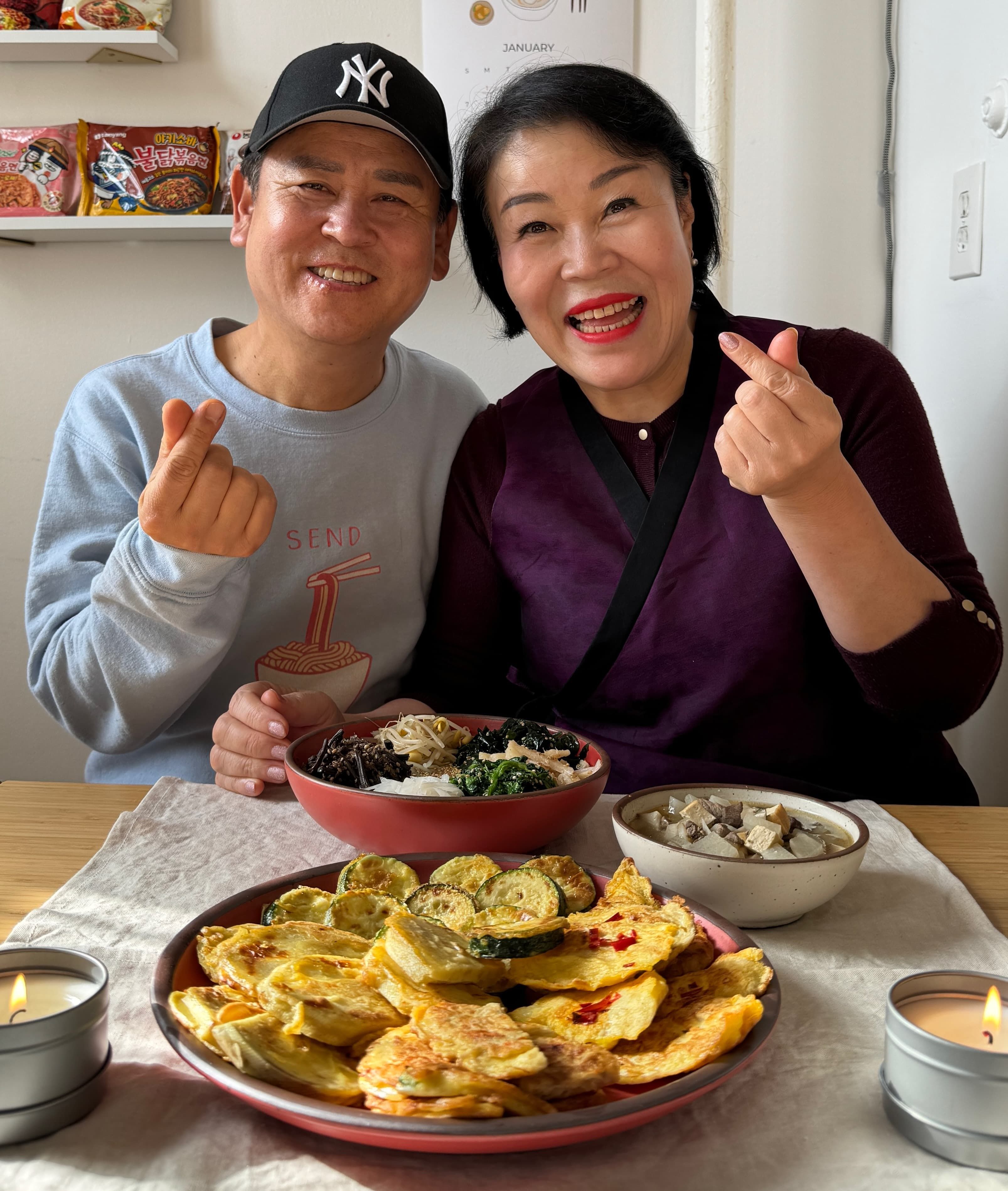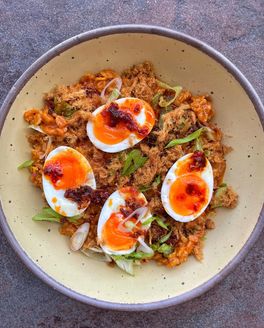
Celebrating Lunar New Year with James Park
Lunar New Year is right around the corner, ushering in the arrival of spring with a multi-day festival full of feasting and beloved traditions that vary from culture to culture and family to family.
For those who celebrate, the color red has a long history symbolizing good fortune and prosperity, so you’ll often find red lending a fiery touch to tabletops and other household decorations during Lunar New Year celebrations. We're looking forward to spreading the table with Henri's Red pots, soaking up the lively banter of friends, and dipping spoons into warm bowls of Tang-Guk soup, hoping beef broth doesn't drip down our chins.
To learn more, we caught up with our friend James Park, the food writer and creator behind “Cooking My Feelings With Jamesy.”
Jasmin: Hi, James! Tell us about Lunar New Year and how you like to celebrate.
James: Lunar New Year is slightly different for different family households and different cultures. I think a lot of people may associate Lunar New Year with Chinese New Year because it essentially stems from that culture. But since I’m Korean, we’re going to celebrate Seollal [Korean Lunar New Year].
For Seollal, my family likes to prepare loads of different dishes for this tradition called jesa. It’s a ritual ceremony to commemorate and remember our ancestors, and families get to come together in a large family setting. We arrange all different kinds of fruits and dishes prepared in a certain way and once we have our household jesa, we go to different relatives' homes to participate in their jesa ceremonies. Another big part of the celebration is when the children bow to the elders (called sebae) and in return they receive a new year’s blessing and a cash gift. I think it’s kind of similar to giving red envelopes in Chinese traditions.
Jasmin: What dishes does your family traditionally prepare?
James: My family is from South Korea, and there’s a lot of different styles of food for jesa that vary from province to province. But, my mom is really good at making Tang-Guk soup, which is basically beef and radish soup. My mom adopted my dad's style of cooking it so that my dad could carry on doing the traditional jesa with the flavors that he grew up with. I thought that was very sweet of my mom, and cooking is such a great joint effort between them.
We also like to make rice cake soup, which represents prosperity. So the more you eat, the more abundance you’ll have in the new year.

Jasmin: Your parents are currently visiting you from South Korea, right? What is cooking with them in your kitchen like?
James: It’s so special because I get to create cooking memories with them. It’s really nice to be able to host my parents at my own place for the first time because I've always lived with my roommate. It’s really nice to watch them get familiar with the new place…they will complain a little bit that they’re not confident the flavors are gonna come out exactly the way they're used to, but the end result takes me back to their kitchen in South Korea. Even though America is not their home, I can see them bridging the gap between America and Korea by eating something they are proud of.
I think food is culture and cooking a recipe is a way to experience culture as well. So…I think being able to cook a recipe and taste it is such a special way of experiencing a culture in your kitchen.
Jasmin: Do you have any hosting tips for serving family-style meals?
James: Yeah, I think it's really important to share the workload with friends or family. If you're having people over I think a lot of people kind of feel stressed out about having to do everything perfectly on their own as a host, but I think it's more communal when you share that kind of task with your friends.
So, even if you are just eating pizza and fried chicken for Lunar New Year, I think it's important to have the mindset that you're there to have a great time and make good memories.
Jasmin: How does this celebration trickle into the rest of your year
James: I think this really sets the tone for the year, and it gives you the energy you need to really start the year with good intentions, whether you are celebrating with your family or with friends. It’s just positive energy from eating good food with your people.
For me, it’s such a special way to start the year with my parents here and then cooking my family recipes in my kitchen. I’ll carry this happy memory of delving into my Korean roots and culture, sharing it even more proudly, and getting to laugh and cook and eat together.
Below, find James' recipes for Goguma Jeon (고구마전), Zucchini-Jeon (호박전), & Korean Pollock Fillets Jeon (동태전).

RECIPE: Goguma Jeon (고구마전)
During Seollal (Korean Lunar New Year), my family always makes different kinds of jeons (savory pancakes) for jesa (a Korean ritual to commemorate the ancestors). Every family prepares different types of jeons, but my family always makes goguma jeons part of the mix.
Goguma, Korean sweet potatoes, has a naturally sweet taste, and it gets lightly coated with an egg-flour mixture for a nice savory crust. So many dishes have a long list of ingredients and complicated preparations. This jeon recipe perfectly shows how simple methods and ingredients can make an excellent dish. It’s slightly sweet and savory, and it also has a nice bite to it. It’s a beautiful side dish to make quickly.
I always love seeing my dad slicing a sweet potato while my mom prepares a batter for jeons for every Seollal with the wonderful sound of oil sizzling in the background. And, whether I make this jeon for Seollal or a regular weeknight dinner, tasting this simple yet delicious goguma jeon will always take me back to happy, nostalgic family memories.
Serves: 2-3
Total cook time: 15 minutes
INGREDIENTS
- 1 egg
- 3 tablespoon water
- ¼ cup AP flour
- A pinch of salt
- 1 10-ounce Korean sweet potato (goguma)
- Canola oil (or any type of neutral oil)
Optional dipping sauce
- 1 tablespoon soy sauce
- 1 teaspoon toasted sesame oil
DIRECTIONS
1. In a medium bowl, whisk 1 egg and 3 tablespoons water. Then, combine 1/4 cup AP flour with a pinch of salt. Whisk everything until it’s well combined. Set it aside. The batter should look thin, slightly watery, and pourable consistency.
2. Peel a 10-ounce Korean sweet potato (goguma) and slice it diagonally with an angle into ¼-inch slices.
3. Put all sliced Korean sweet potato into the prepared batter, making sure all the slices are fully coated into the batter.
4. In a large nonstick pan over medium-low heat, add a generous amount of canola oil (or any neutral oil like vegetable, grapeseed, or avocado oil), about 1 tablespoon to start. Once the oil is shimmering, add the batter-coated sliced sweet potato to the pan without overcrowding it.
5. Fry each other for 2 to 3 minutes or until golden brown. You can check whether the jeons are done by poking them. Serve with a side of soy sauce as a dipping sauce, if desired.
OTHER VARIATIONS FOR SIMPLE JEONS
My family always prepares three different types of jeons. Goguma-jeon is one of them, and there are some other simple jeons you can prepare with the same ingredients you use for making goguma-jeon to be in the full Seollal spirits.
My mom makes zucchini-jeon and Korean pollock fillet jeons first then combine the leftover flour and eggs to make a batter for goguma jeon at the end. But, these are the recipes for each dish since not everyone can prepare all three types of jeons at the same time, like my Korean mom!
RECIPE: Zucchini-Jeon (호박전) & Korean Pollock Fillets Jeon (동태전)
INGREDIENTS
- 3 eggs
- ¼ cup AP flour
- A pinch of salt
- Zucchini or Pollock fillets (called Dong Tae)
DIRECTIONS
1. In a medium-sized bowl, crack 3 eggs and whisk them until frothy.
2. In a separate bowl, add ¼ cup AP flour with a pinch of salt.
3. For zucchini jeon, slice zucchini into ¼-inch discs. Pat them dry with paper towels to get rid of any moisture. Dredge the dry zucchini slices into flour first, then dip them into the egg mixture. In a nonstick pan over medium-low heat, cook the egg-coated zucchini discs until each side is golden brown, for 2 to 3 minutes per side.
For pollock fillets, since they come in mostly frozen, defrost them first. Pat the fillets dry with paper towels. Dredge the fillets into flour first, then dip them into the egg mixture. In a nonstick pan over medium-low heat, cook the egg-coated fillets until each side is golden brown, for 3 to 4 minutes per side.

